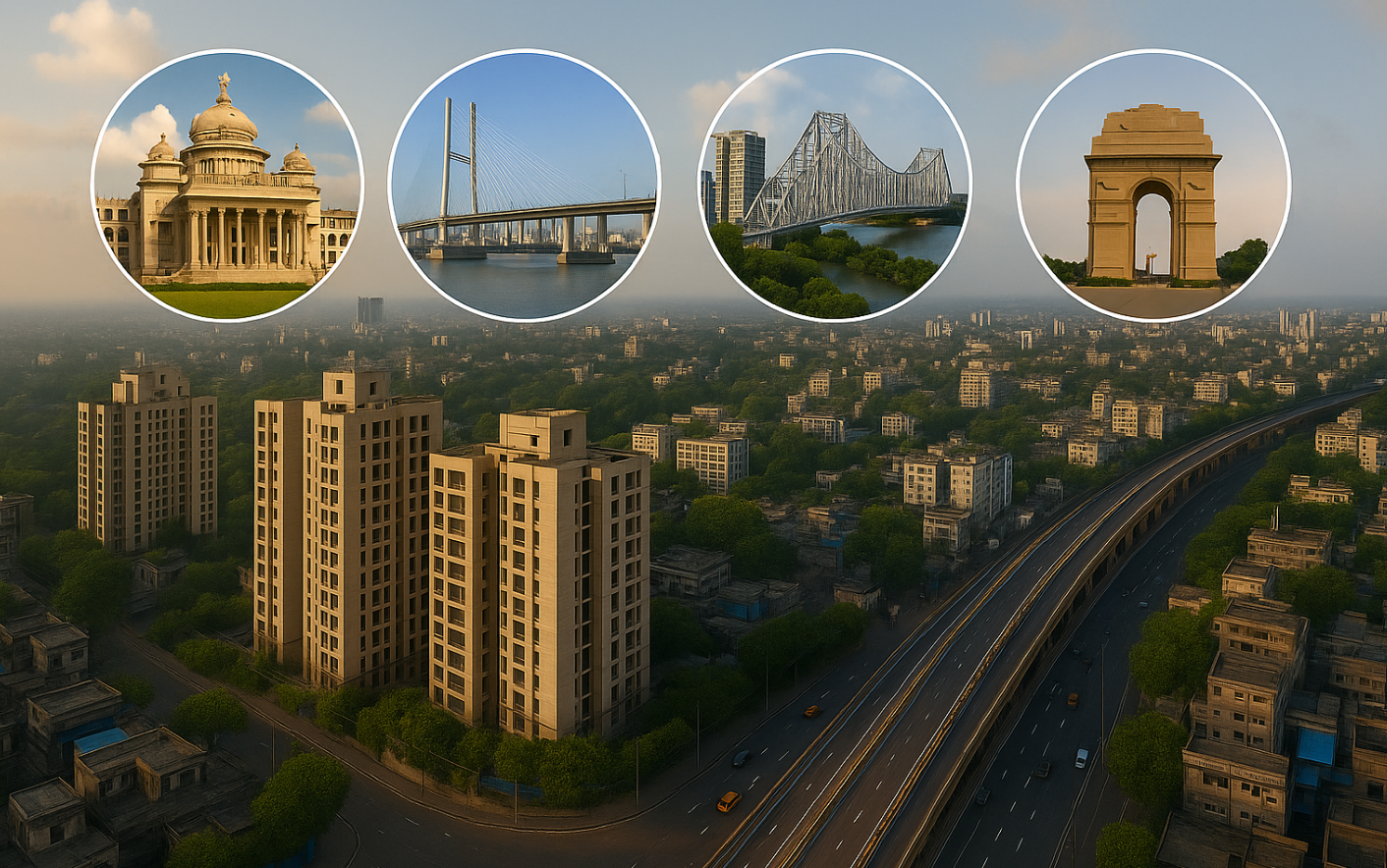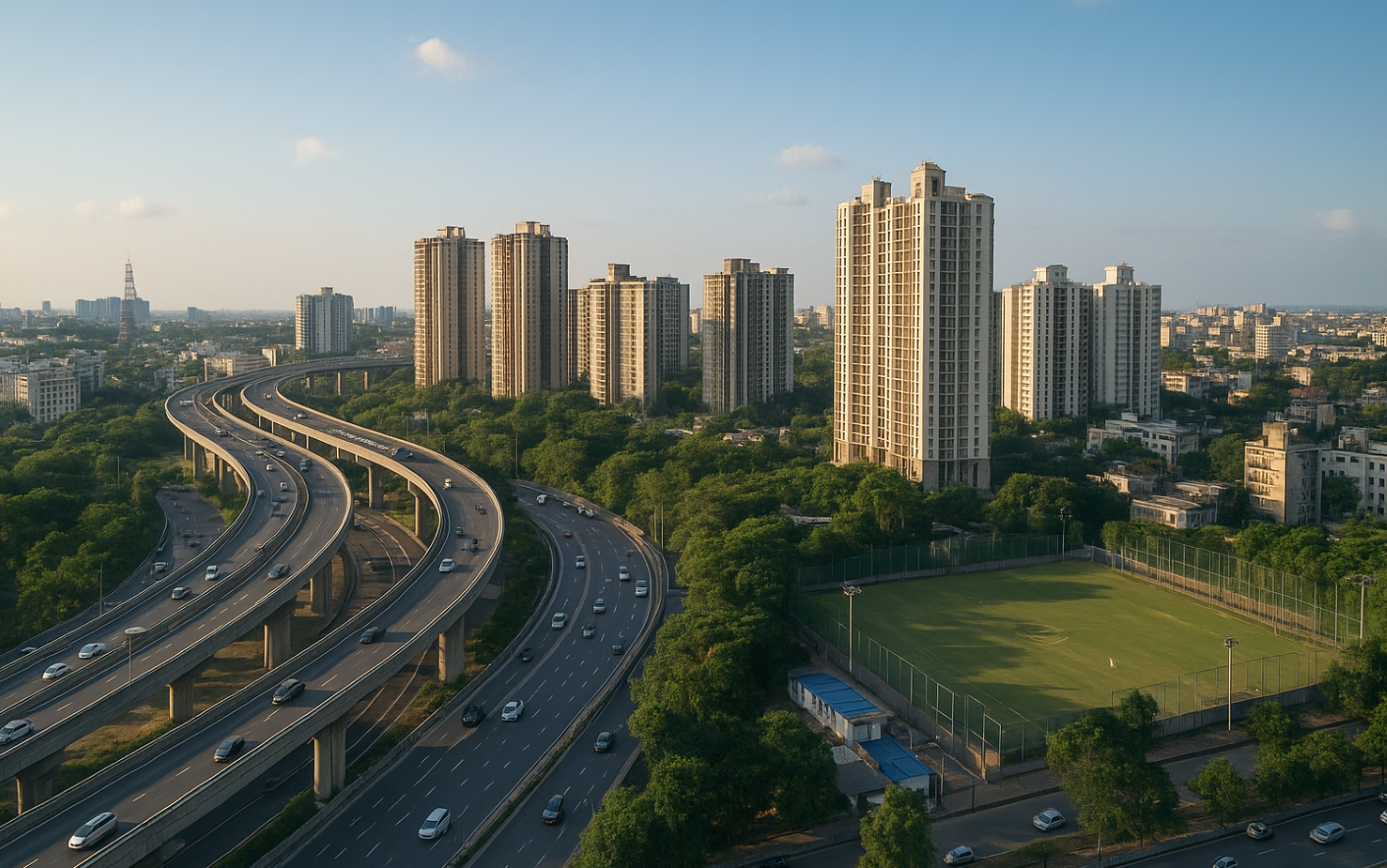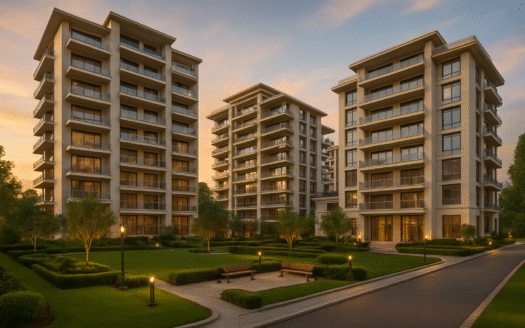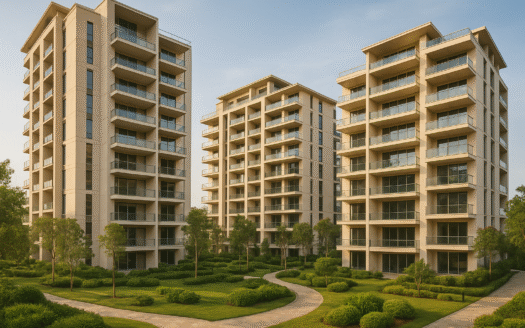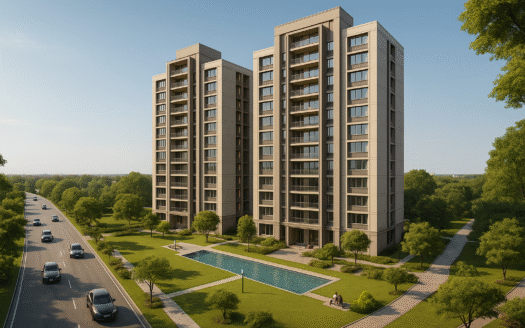Introduction
India’s real estate market has evolved into one of the most dynamic and promising investment avenues in recent years. Fueled by rapid urbanization, major infrastructure projects, a growing middle class, and rising demand for both residential and commercial spaces, the sector continues to attract domestic and global investors alike. From affordable housing in emerging towns to luxury high-rises in metro cities, real estate investment in India now spans a wide spectrum of opportunities tailored to various budgets, objectives, and risk appetites.
Investing in real estate is not merely about buying property—it’s about making strategic decisions backed by location potential, rental demand, legal assurance, and future growth indicators. A well-timed and well-researched investment can deliver significant returns, offer stable passive income, and serve as a hedge against inflation.
But what truly sets one city apart from another when it comes to ROI? Factors such as economic development, job market strength, transport connectivity, civic infrastructure, and policy reforms all contribute to the performance of a city’s real estate market. In this guide, we dive deep into the top cities in India that currently offer the best return on investment for real estate buyers and investors.
We’ll explore why cities like Bengaluru, Mumbai, Pune, Hyderabad, Delhi NCR, Chennai, and Kolkata consistently rank among the most profitable markets. Special attention will be given to the real estate investment landscape in Kolkata, where affordability, appreciation potential, and infrastructure growth make it one of the most stable and scalable options for both first-time and seasoned investors.
Additionally, this blog will provide insights into the pros and cons of residential vs. commercial investments, the impact of government policies like RERA and PMAY, and practical strategies for maximizing returns from your investment. Whether you’re looking at buying your first rental property, diversifying your portfolio, or understanding the rise of flats in Kolkata, this comprehensive guide will help you navigate India’s real estate landscape with clarity and confidence.
Key Takeaways
- Top Investment Cities: Cities like Bengaluru, Mumbai, Pune, Hyderabad, Delhi NCR, Chennai, and Kolkata are emerging as top-performing destinations for real estate investments due to their infrastructure, job growth, and market maturity.
- High ROI Factors: Property appreciation is driven by metro expansions, tech parks, business hubs, educational institutions, and connectivity to major economic corridors.
- Best Property Types: Evaluate your goals—residential properties are ideal for stable rental income and capital safety, while commercial real estate offers higher yields with increased risk.
- Government Incentives: Schemes like Pradhan Mantri Awas Yojana (PMAY) and compliance through RERA have improved buyer confidence and streamlined the investment process.
- Investment Risks: Be aware of market cycles, legal paperwork, delayed possession, and property management challenges, especially in under-construction or remote locations.
- Real Estate Investment in Kolkata: A promising mix of affordability and steady appreciation makes Kolkata a favorite among long-term investors. The demand for flats in Kolkata is on the rise due to metro connectivity, improved infrastructure, and IT expansion.
- Emerging Locations: Suburban belts and satellite towns in metro regions are gaining traction for their lower entry costs and high appreciation potential over the next 5–10 years.
Pro Investment Strategies: From rental yield mapping and legal due diligence to choosing under-construction properties from reputed developers, we’ll share insider tips to help you make smarter investment choices.
 Factors That Influence Real Estate ROI in India
Factors That Influence Real Estate ROI in India
To make the most out of a real estate investment in India, it’s essential to understand the factors that directly impact Return on Investment (ROI). From infrastructure upgrades and economic drivers to rental income potential and market affordability, these variables determine how well your property performs over time.
Here’s a breakdown of the most crucial factors influencing ROI for both residential and commercial real estate investors:
1. Infrastructure & Connectivity
Infrastructure is the backbone of real estate value. The presence—or even the promise—of better connectivity can drive exponential property appreciation.
- Metro network expansions, new flyovers, expressways, and ring roads significantly enhance the accessibility of suburban and fringe areas, turning them into high-demand zones.
- Proximity to airports, railway stations, IT corridors, and industrial zones plays a pivotal role in increasing property desirability and resale value.
- Cities under the Smart City Mission are witnessing an uptick in property values due to improved amenities like smart traffic systems, waste management, and public services.
- Upcoming government projects such as the Mumbai Metro Line 3, Hyderabad’s Airport Metro Express, and Kolkata’s Joka–Esplanade Metro extension are not just improving daily commute—they’re boosting real estate growth along their corridors.
Infrastructure-led development is often a leading indicator of future ROI. Properties bought before completion of major infrastructure projects tend to deliver superior capital gains once these projects are operational.
2. Employment & Economic Growth
The presence of robust employment ecosystems greatly influences real estate demand, especially in terms of rentals and resale value.
- Cities with IT parks, SEZs (Special Economic Zones), industrial belts, and corporate offices attract a large working population, which directly fuels housing demand.
- Bengaluru, Hyderabad, and Pune are classic examples of cities where employment growth has translated into real estate boom—thanks to IT and startup culture.
- Real estate investment in Kolkata is catching up due to the rapid development of IT hubs in New Town and Sector V, the rise in commercial spaces, and government efforts to attract businesses.
- An expanding job market means more tenants, higher occupancy rates, and strong demand for both budget and premium housing.
In short, where jobs go, property demand follows.
3. Rental Yields & Appreciation Trends
For investors who aim to generate passive income and build long-term wealth, rental yield and capital appreciation are key ROI benchmarks.
- High rental yield cities like Gurugram, Bengaluru, and Pune offer 3–5% annual returns on average, especially in business and education-centric zones.
- Commercial real estate (e.g., shops, offices, and coworking spaces) located in core business districts generally fetch higher rental returns than residential properties but come with higher maintenance and vacancy risks.
- Flats in Kolkata are increasingly gaining investor interest due to their affordability, infrastructure growth, and improving rental yields, particularly in areas like EM Bypass, New Town, and Salt Lake.
- Properties close to universities, hospitals, and IT hubs usually stay in high demand, ensuring consistent rental income and faster occupancy.
- Appreciation trends also vary—properties in under-construction metro zones tend to see price jumps once the infrastructure goes live.
Smart investors track both short-term rental income and long-term price growth to evaluate the complete ROI picture.
4. Affordability & Market Stability
While high-value markets like Mumbai and Delhi NCR promise great returns, they also come with steep entry costs and higher volatility. On the other hand, several cities in India offer the right balance of affordability and price stability, making them more investor-friendly.
- Cities like Kolkata, Ahmedabad, and Nagpur offer properties at relatively lower price points, reducing the financial burden and making it easier to diversify or invest early.
- Flats in Kolkata, for instance, often start from ₹30–₹40 lakh in emerging suburbs like Joka or Rajarhat, yet show consistent value appreciation over time.
- Affordable markets are less prone to sudden price drops during economic slowdowns and offer better long-term holding value, especially for first-time investors.
- Moreover, property taxes, maintenance costs, and stamp duties are often lower in such cities, further enhancing the net returns.
For those seeking stable growth without excessive risk, affordable and mid-tier cities offer excellent entry points into the Indian real estate market.
 Best Cities for Real Estate Investment in India
Best Cities for Real Estate Investment in India
| City | Property Type | Avg Price/Sq. Ft (₹) | ROI Potential |
| Bengaluru | Residential & Commercial | ₹6,000 – ₹10,000 | High – IT Hub, Rental Demand |
| Mumbai | Apartments, Offices | ₹12,000 – ₹25,000 | Very High – Business Capital |
| Pune | Flats, Villas | ₹5,000 – ₹9,000 | High – Growing IT Sector |
| Hyderabad | Premium & Budget Homes | ₹5,500 – ₹9,500 | High – Affordable Growth |
| Chennai | Residential & Office Spaces | ₹6,000 – ₹10,500 | Moderate – Infrastructure Boost |
| Delhi NCR | Luxury & Affordable Housing | ₹4,500 – ₹12,000 | High – Corporate & Startup Hub |
| Kolkata | Affordable Apartments | ₹3,500 – ₹7,000 | Moderate – Steady Growth |
| Ahmedabad | Affordable Housing | ₹3,000 – ₹6,500 | Stable – Growing Industrial Base |
| Jaipur | Villas & Townhouses | ₹3,500 – ₹7,500 | Moderate – Tourist & Trade Hub |
Residential vs. Commercial Investment: Which Is Better?
| Factor | Residential Property | Commercial Property |
| Investment Cost | Lower, ideal for first-time buyers | Higher, but better ROI potential |
| Rental Income | Moderate, long-term stability | High, but dependent on businesses |
| Growth Potential | Appreciates steadily over time | High appreciation in prime locations |
| Market Liquidity | Easier resale & demand | Requires longer holding period |
 Government Policies & Tax Benefits
Government Policies & Tax Benefits
- PMAY (Pradhan Mantri Awas Yojana): Subsidized housing schemes for first-time buyers.
- RERA Compliance: Ensures transparency and security in property transactions.
- Tax Deductions:
- Section 80C: ₹1.5 lakh deduction on principal repayment.
- Section 24(b): ₹2 lakh deduction on home loan interest.
- GST on properties: 5% on under-construction homes, none on ready-to-move properties.
Capital Gains Tax Benefits: Long-term investors can avail tax benefits on
Pro Tip from the Experts
Follow the infrastructure, not the crowd.
Instead of chasing hyped-up localities, invest in areas backed by upcoming metro lines, IT parks, highways, or government-backed development plans. These zones often offer the highest appreciation and rental potential within 3–5 years—especially when entered at the early stages of development.
Conclusion
India’s real estate landscape is evolving rapidly, offering a wealth of opportunities for investors who understand the dynamics of location, timing, and property type. From the tech-driven corridors of Bengaluru and Hyderabad to the affordable and stable markets like Kolkata, each city brings a unique investment profile that caters to different goals—whether it’s rental income, long-term appreciation, or portfolio diversification.
What truly sets successful investors apart is their ability to align market trends with personal financial objectives. Whether you’re eyeing high-yield commercial properties or value-for-money flats in Kolkata, doing your homework, understanding infrastructure plans, and evaluating rental demand will ensure your investment delivers maximum ROI.
At Get My Ghar, we help you simplify this journey. Our curated listings, local market insights, and end-to-end support empower you to make data-driven decisions with confidence.
 FAQs
FAQs
Q1. Which city in India offers the best real estate ROI?
While many cities in India offer strong investment potential, Bengaluru, Mumbai, and Hyderabad consistently rank among the top choices for highest ROI due to their thriving IT sectors, startup ecosystems, and growing commercial infrastructure.
- Bengaluru stands out for its consistent rental demand, especially in areas like Whitefield and Electronic City.
- Hyderabad, with lower property prices compared to Mumbai or Delhi, offers excellent yields due to booming tech zones like Hitec City and Gachibowli.
- Mumbai, though expensive, provides long-term capital appreciation in prime localities like Bandra, Powai, and Thane.
Additionally, Kolkata is increasingly becoming a smart choice for long-term investors due to its affordability, metro connectivity, and stable appreciation rates, especially in New Town and EM Bypass.
Q2. What is a good rental yield in Indian real estate?
In India, a rental yield of 3% to 6% is generally considered healthy for residential properties, while commercial properties like office spaces and retail shops can generate 7% to 12% or more, depending on location and demand.
- For instance, a flat in Kolkata priced at ₹40 lakh generating ₹20,000 monthly rent yields about 6% gross annually.
- High-demand areas near IT parks, universities, or commercial zones usually offer better occupancy and rental growth.
Remember, while commercial spaces offer higher returns, they also come with higher vacancy risk, maintenance costs, and initial capital requirements.
Q3. Is it better to invest in residential or commercial property in India?
The decision between residential and commercial real estate investment depends on your financial goals, risk tolerance, and investment capacity.
- Residential properties are ideal for first-time investors due to lower ticket sizes, easier financing, and stable rental demand. They’re also easier to manage and sell.
- Commercial properties provide higher ROI but involve higher upfront costs, complex leases, and longer vacancies during tenant turnovers.
If you’re looking for predictable returns and simpler management, start with residential. If you seek higher cash flow and are comfortable with more responsibility, commercial could be the way forward.
Q4. What are the tax benefits for real estate investors in India?
The Indian government provides multiple tax benefits to promote real estate ownership and investment:
- Section 80C: You can claim up to ₹1.5 lakh per year on the principal repayment of your home loan.
- Section 24(b): You can claim up to ₹2 lakh per year on the interest paid on a home loan (for self-occupied property).
- Section 80EE/80EEA: First-time buyers can avail additional deductions under specific conditions, especially under PMAY or affordable housing schemes.
Investors can also claim depreciation (for rental properties), deduct municipal taxes, and claim other exemptions depending on usage and holding period.
Q5. Is Kolkata a good city for long-term real estate investment?
Yes, Kolkata is gaining strong momentum among real estate investors due to its balanced market conditions. The city offers:
- Affordable entry prices in both residential and commercial segments
- Steady appreciation rates in key zones like Rajarhat, New Town, and EM Bypass
- Growing demand for flats in Kolkata, especially near IT parks, metro corridors, and premium townships
- Government-backed initiatives and infrastructure upgrades that are boosting overall connectivity and liveability
For those seeking stable, long-term gains without the extreme volatility of markets like Mumbai or Delhi NCR, Kolkata is an excellent option.
Q6. What is the minimum investment needed to enter the Indian real estate market?
The minimum investment required depends on the city and type of property you choose:
- In cities like Kolkata, you can find 1BHK flats starting from ₹25–₹30 lakh, making it accessible to first-time investors.
- In Pune or Hyderabad, mid-range flats in the suburbs may start around ₹40–₹50 lakh.
- Commercial properties like small offices or retail units may require ₹50 lakh to ₹1 crore or more, depending on the location.
Apart from the property cost, budget for additional expenses like registration fees, stamp duty, GST, brokerage, and interior costs if it’s a bare unit.

